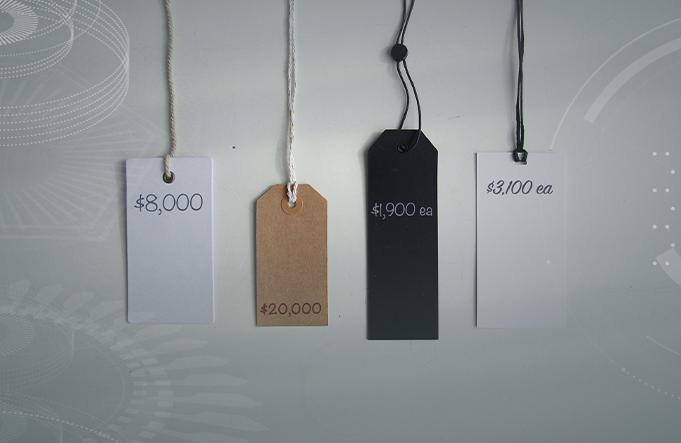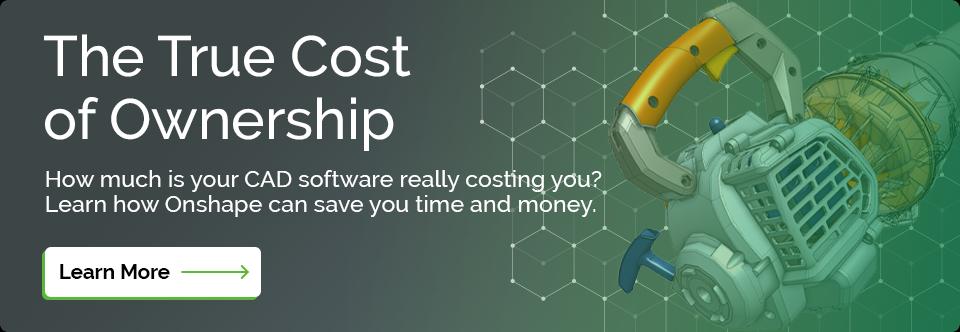
3:15
Buying things should be a straightforward process. But the fact is, it’s not. Take flying, for example. An airline could say it’s charging $59 for a one-way ticket, but by the time you get to the checkout, the extra costs that weren’t included in the initial “sale,” like choosing a seat, baggage fees, taxes and travel insurance, can add up. The ticket is suddenly much costlier than advertised.
These hidden fees are everywhere, from the 23 cents for an extra McNugget sauce packet to the price of tailoring a new suit.
Engineering and manufacturing businesses may feel the same disappointment from hidden fees and extra costs when shopping for the right computer-aided design (CAD) platform – especially if it’ll make or break the bank.
The initial sticker price of CAD or Product Data Management (PDM) software is not the true cost of ownership. There are numerous ongoing expenses that are not included – and sometimes not immediately considered – when making your upfront investment.
Onshape has developed a guide, “Sticker Shock: The Invisible Costs of CAD,” to help you uncover the hidden costs of CAD software and all the price factors when choosing a new platform.
For now, here are some tips on uncovering hidden fees before making a decision.
Know Where to Find the Hidden Costs
Unfortunately, buying legacy file-based CAD isn’t as straightforward as paying the sticker price and moving on. The bills keep coming. There are annual maintenance fees for software upgrades, whether you choose to install them or not. If you want flexibility to share a CAD license between engineers living in different parts of the world, you will pay handsomely for the “privilege.” And the costs for data migration to a PDM system (to prevent version control problems) can easily spiral into tens of thousands of dollars.
In addition to hidden software costs are hardware costs. The demands of calculating CAD geometry and handling complex graphics isn’t like installing typical number-crunching business software. The associated hardware, server and networking costs are enormous.
Prepare for Future Fees
Preparing for the future can be anxiety-inducing. But it is necessary for pragmatic business owners.
Luckily, some future events related to product design workflow can be predicted. Software will always need to be updated. Computers become obsolete and outdated. New team members might work from another country and need software licenses.
All of these things and more add to the final tally of CAD ownership. Plus, when these hidden costs become required costs year after year, what's the "true ROI" then?
But what about the things that can’t be predicted? The disruptions that highlight the vulnerabilities in our workflows?
In our blog "How to Future Proof Your Business Based on True Cost of CAD," Onshape’s Neil Cooke advises decision makers to prepare for such disruptions by building an agile business. Agile tools that allow teams to be flexible are priceless assets to any company.
Arm Yourself With Knowledge
Before going to a mechanic to fix an issue with your car, a wise consumer would scour the internet for advice. It’s important to seek two or three estimates for possible problems and the costs associated with it. (Why pay for an air filter when you can do it yourself?)
When going forward with a new CAD platform, every decision could cost a little bit more somewhere down the line. As mentioned above, PDM and its associated extra hardware and software costs can tack on a hefty price to the cost of ownership for a business.
By considering the true, total cost of ownership, and anticipating future needs due to growth and competitive challenges, you’ll be sure to have all the information needed to make the best decision for your company.
Learn more about the true cost of ownership by downloading the eBook “Sticker Shock: The Invisible Costs of CAD.”

Latest Content

- Case Study
- Industrial Equipment & Machine Design
Reframe Systems: Transforming Homebuilding with Digital Automation and Cloud-Native Onshape
09.25.2025 learn more
- Blog
- Becoming an Expert
- Assemblies
- Simulation
Mastering Kinematics: A Deeper Dive into Onshape Assemblies, Mates, and Simulation
12.11.2025 learn more
- Blog
- Evaluating Onshape
- Learning Center
AI in CAD: How Onshape Makes Intelligence Part of Your Daily Workflow
12.10.2025 learn more
- Blog
- Evaluating Onshape
- Assemblies
- Drawings
- Features
- Parts
- Sketches
- Branching & Merging
- Release Management
- Documents
- Collaboration
Onshape Explained: 17 Features That Define Cloud-Native CAD
12.05.2025 learn more



